
BRANDING
An Application of Unilever Brand Key Model - The Case of DOVE Product.
MBA Participants at Solvay Brussels School,
Ho Chi Minh, Vietnam
Kay De Vreese
Giang Nguyen
Thieu Nguyen
Tuan Nguyen
Brand Key Model of Dove Brand
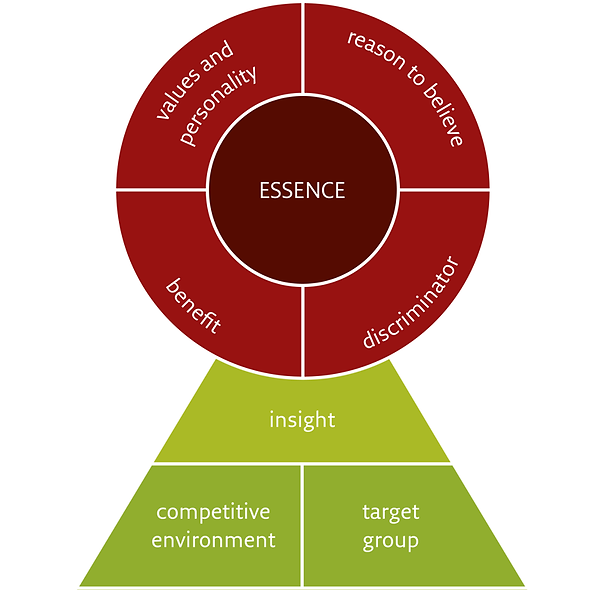
INSIGHT
My skin is always dried whenever using the other soaps, I want to looking for a soap/ shower cream can make my skin moisture
COMPETITIVE
FRAME
TARGET CUSTOMER


REASON TO BELIEVE
- Dove contains ¼ moisturizing cream,
- Recommended by dermatologists
- Endorsed by users
VALUE & PERSONALITY
-
Brand value: natural, confident, friendly and comfortable.
-
Brand personality: purity, optimism, feminism and self confidence.
BENEFIT
-
Functional benefits: Moisturizing the skin, without drying the skin and increase the feminine when use the product.
-
Emotional benefits: Building up self esteems and confidence among woman.
DISCRIMINATOR
Dove contains of 1/4 moisturizing cream, so Dove won't dry my skin like the other soaps
ESSENCE
Restoring Feminity
COMPETITIVE FRAME
•In the field of personal hygiene
•In Hair Care, Pantene, Sunsilk, Rejoice and Treseme are Dove’s competitors.
•In Beauty Bar and Body Wash, Olay, LUX, Lifebuoys, Rexona, Camay is Dove’s competitor.
TARGET CUSTOMER
-
Women who are in age 25 to 35.
-
Women who have knowledge about beauty and care for their skin.
-
Women who are in middle or high income level.
-
Believe the recommendation of a real beauty inside.

The Dove® Campaign for Real Beauty
Imagine a World Where Beauty is a Source of Confidence, Not Anxiety
The Dove brand is rooted in listening to women. Based on the findings of a major global study, The Real Truth About Beauty: A Global Report, Dove launched the Campaign for Real Beauty in 2004. The campaign started a global conversation about the need for a wider definition of beauty after the study proved the hypothesis that the definition of beauty had become limiting and unattainable. Among the study’s findings was the statistic that only 2% of women around the world would describe themselves as beautiful. Since 2004, Dove has employed various communications vehicles to challenge beauty stereotypes and invite women to join a discussion about beauty. In 2010, Dove evolved the campaign and launched an unprecedented effort to make beauty a source of confidence, not anxiety, with the Dove Movement for Self-Esteem.
Widening the Definition of Beauty
In 2004
The Campaign for Real Beauty launched in September 2004 with a much talked-about ad campaign featuring real women whose appearances are outside the stereotypical norms of beauty. The ads asked viewers to judge the women’s looks (oversized or outstanding? and wrinkled or wonderful?), and invited them to cast their votes at campaignforrealbeauty.com.
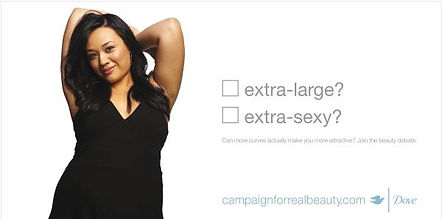


In 2005
Dove kicked off the second and most iconic phase of the Campaign for Real Beauty in June 2005, with advertising featuring six real women with real bodies and real curves. The phase of the campaign was created to debunk the stereotype that only thin is beautiful and it drove thousands of women to campaignforrealbeauty.com to discuss beauty issues
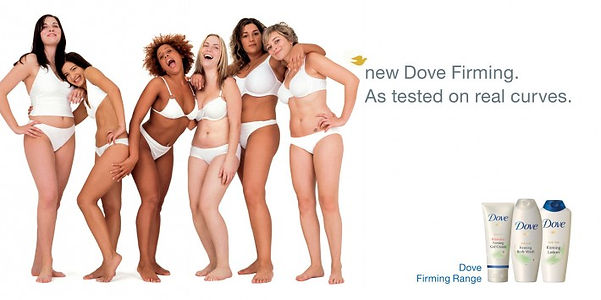

In 2006
In September 2006, a news and media furor erupted when Spain banned overly thin models from its fashion runways. The debate spoke to the heart of the Dove Campaign for Real Beauty mission. In response, Dove® produced a compelling short film, Evolution, depicting the transformation of a real woman into a model and promoting awareness of how unrealistic perceptions of beauty are created.
As so many girls and young women develop low self-esteem from hang-ups about their looks, and consequently fail to reach their full potential in life, Dove established the Dove Self-Esteem Fund. The Dove Self-Esteem Fund was created to act as an agent of change to inspire and educate girls and women about a wider definition of beauty. This same year, the brand released a commercial called Little Girls during the Super Bowl, reaching an estimated 89 million viewers.
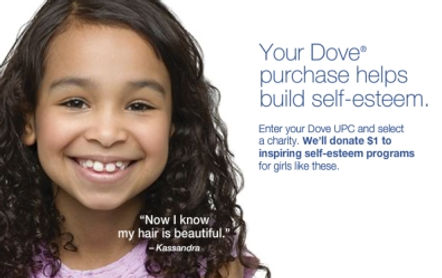
In 2007
Continuing its ongoing commitment to widen the narrow definition of beauty, Dove launched the third phase of the Campaign for Real Beauty in February 2007. The Dove® global study, Beauty Comes of Age, revealed that 91% of women ages 50–64 believe it is time for society to change its views about women and aging. The campaign celebrated the essence of women 50+—wrinkles, age spots, grey hair and all. It was brought to life through a communications campaign created with internationally renowned photographer Annie Leibovitz.
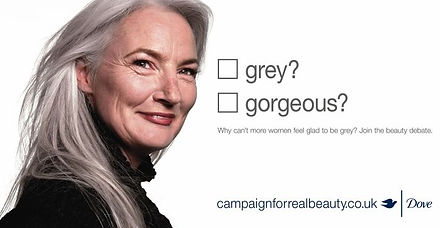


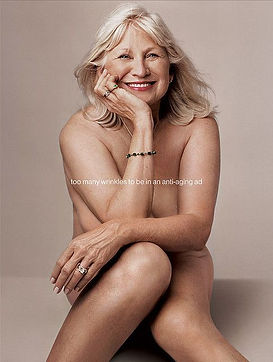


A Bold New Vision: The Dove® Movement for Self-Esteem
In 2010
Dove set out a bold new vision for the brand with the Dove® Movement for Self-Esteem. The Dove Movement for Self-Esteem provides women everywhere with opportunities to mentor the next generation and celebrate real beauty. There are many ways to become involved. Dove invites women everywhere to join the brand in making its vision a reality. Together with experts and key partners (in the U.S., Dove® supports the work of the Girl Scouts of the U.S.A., Girls Inc., and Boys & Girls Clubs of America) Dove has created self-esteem- building, educational programs and activities that encourage, inspire and motivate girls around the world. Dove has reached over 7 million girls so far with these programs, and set a global goal of reaching 15 million girls by 2015.


In 2011
Dove released the findings of its largest global study to date on women’s relationship with beauty—The Real Truth About Beauty: Revisited. The study revealed that only 4% of women around the world consider themselves beautiful, and that anxiety about looks begins at an early age. In a study of over 1,200 10-to-17-year-olds, a majority of girls, 72%, said they felt tremendous pressure to be beautiful. The study also found that only 11% of girls around the world feel comfortable using the word beautiful to describe their looks, showing that there is a universal increase in beauty pressure and a decrease in girls' confidence as they grow older. Though Dove efforts have moved the needle in a positive direction, there is more to be done.



In 2013
Dove’s most recent campaign effort is the Dove Real Beauty Sketches video. The short film used an FBI-trained sketch artist to draw women first based on their own self-perception and then based on that of a stranger. The stranger's descriptions were regularly more stereotypically attractive and similar to what the subjects actually looked like — hammering in Dove's point that women are often overly critical of their appearances and don't see their true beauty.
The purpose of the video is described as follows: “Women are their own worst beauty critics. Only 4% of women around the world consider themselves beautiful. At Dove, we are committed to creating a world where beauty is a source of confidence, not anxiety. So, we decided to conduct a compelling social experiment that explores how women view their own beauty in contrast to what others see.”


“What has stayed with me are the emotional reactions the women had when they viewed the composite sketches hung side by side. I think many of these brave women realised that they had a distorted self-perception that had affected parts of their lives in significant ways.” - Gil Zamora FBI forensic artist

In 2015
Dove latest film Choose Beautiful, Dove traveled to San Francisco, Shanghai, Delhi, London and Sao Paulo to prove that beauty is a choice – and the power of this choice is in your hands…Beauty is a choice available to all of us every day. However, it’s a simple truth that women all over the world don’t feel able to see themselves as beautiful. Mindfulness is a way of helping us all think more positively about ourselves by learning to appreciate our own unique beauty.
Throughout the years, Dove has transformed itself into a powerful platform supporting women’s confidence and self-esteem. The focus comes off of advertising products and turns to advertising Dove’s beliefs and emotional appeal and creating an image as being supportive and compassionate as an effective way of gaining loyalty.
( Sourcing from http://www.dove.us/Social-Mission/campaign-for-real-beauty.aspx )